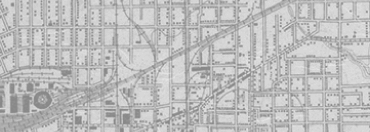


Back
Photograph of courtroom sketch of defense witness Dr. Frederic Gibbs
Photograph of courtroom pencil sketch on paper by CBS News courtroom artist Howard Brodie. The sketch shows defense witness Dr. Frederic Gibbs testifying during the Jack Ruby trial on March 13, 1964. Dr. Gibbs is seated at the witness stand. He is wearing a suit and holding his glasses in one hand. One of the attorneys, possibly defense attorney Melvin Belli, is questioning him. The female court reporter is visible in front and to the right of Gibbs. The handwritten captions in the upper left and right corners read "LAST WITNESS" and "Dr. Frederic Gibbs" respectively while the handwritten caption in the lower right corner reads "3/13/64 last defense." Brodie made the original pencil sketches for CBS News during the trial of Jack Ruby after the judge barred cameras from the courtroom. Brodie then gave Joe Tonahill this photograph of a courtroom sketch as part of a collection of more than 40 in 1964.
Photograph of courtroom sketch of defense witness Dr. Frederic Gibbs
03/13/1964
Paper
14 3/4 × 19 3/16 in. (37.5 × 48.7 cm)
Tonahill Family Partners Collection/The Sixth Floor Museum at Dealey Plaza
2014.034.0002
Howard Brodie (1915-2010) was a sports artist for the San Francisco Chronicle when he enlisted in the U.S. Army with America's entry into World War II. He ultimately became one of the best-known sketch artists of the war, frequently published in the weekly U.S. military magazine, Yank, which ran from June 1942 to December 1945. After the war, Brodie spent the next thirty-five years as a courtroom artist, attending several notable trials including the Chicago Seven, Charles Manson and, of course, the Jack Ruby trial in 1964. For the Ruby trial, Brodie worked as a CBS-TV artist correspondent. Mr. Brodie recorded an oral history with the Museum in 2006. -- Stephen Fagin, Curator
Dr. Frederic Andrews Gibbs (1903-1992) was a pioneer in the use of electroencephalography (EEG) for the treatment of epilepsy. He was the sixty-sixth and final witness at the Jack Ruby trial. Gibbs proved to be a key defense witness, testifying that the EEG tracing of Jack Ruby was indicative of psychomotor epilepsy, suggesting that Ruby murdered Oswald while in a "fugue state" and therefore unaware of his actions. Initially, Gibbs had declined to attend the trial and only submitted a written report. However, when the prosecution dismissed his findings on March 12, 1963, Gibbs was so upset that he decided to fly from Chicago to Dallas overnight to defend his opinion in person (without charging the defense any fees). Ultimately, his last-minute testimony was not enough to sway the Dallas jury, who found Ruby guilty of murder with malice the following day. -- Stephen Fagin, Curator

Photograph of courtroom sketch of defense witness Dr. Frederic Gibbs
Photograph of courtroom pencil sketch on paper by CBS News courtroom artist Howard Brodie. The sketch shows defense witness Dr. Frederic Gibbs testifying during the Jack Ruby trial on March 13, 1964. Dr. Gibbs is seated at the witness stand. He is wearing a suit and holding his glasses in one hand. One of the attorneys, possibly defense attorney Melvin Belli, is questioning him. The female court reporter is visible in front and to the right of Gibbs. The handwritten captions in the upper left and right corners read "LAST WITNESS" and "Dr. Frederic Gibbs" respectively while the handwritten caption in the lower right corner reads "3/13/64 last defense." Brodie made the original pencil sketches for CBS News during the trial of Jack Ruby after the judge barred cameras from the courtroom. Brodie then gave Joe Tonahill this photograph of a courtroom sketch as part of a collection of more than 40 in 1964.
Photograph of courtroom sketch of defense witness Dr. Frederic Gibbs
03/13/1964
Photographs
Jack Ruby trial
Sketches
Witnesses
Artist
Artwork
Brodie, Howard
Gibbs, Frederic A.
Belli, Melvin
CBS News
Dallas
Paper
14 3/4 × 19 3/16 in. (37.5 × 48.7 cm)
Tonahill Family Partners Collection/The Sixth Floor Museum at Dealey Plaza
2014.034.0002
Howard Brodie (1915-2010) was a sports artist for the San Francisco Chronicle when he enlisted in the U.S. Army with America's entry into World War II. He ultimately became one of the best-known sketch artists of the war, frequently published in the weekly U.S. military magazine, Yank, which ran from June 1942 to December 1945. After the war, Brodie spent the next thirty-five years as a courtroom artist, attending several notable trials including the Chicago Seven, Charles Manson and, of course, the Jack Ruby trial in 1964. For the Ruby trial, Brodie worked as a CBS-TV artist correspondent. Mr. Brodie recorded an oral history with the Museum in 2006. -- Stephen Fagin, Curator
Dr. Frederic Andrews Gibbs (1903-1992) was a pioneer in the use of electroencephalography (EEG) for the treatment of epilepsy. He was the sixty-sixth and final witness at the Jack Ruby trial. Gibbs proved to be a key defense witness, testifying that the EEG tracing of Jack Ruby was indicative of psychomotor epilepsy, suggesting that Ruby murdered Oswald while in a "fugue state" and therefore unaware of his actions. Initially, Gibbs had declined to attend the trial and only submitted a written report. However, when the prosecution dismissed his findings on March 12, 1963, Gibbs was so upset that he decided to fly from Chicago to Dallas overnight to defend his opinion in person (without charging the defense any fees). Ultimately, his last-minute testimony was not enough to sway the Dallas jury, who found Ruby guilty of murder with malice the following day. -- Stephen Fagin, Curator









